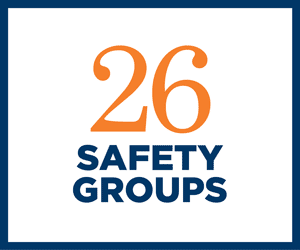Young: Trouble in the MPNs
Thursday, February 9, 2017 | 1
You’re hungry, so you go to what looks like a restaurant. But a bunch of the entrances are blocked, and they’re making you wait and wonder if you will get in.

Julius Young
Some of the staff say that they can’t serve you. You call the place, and some calls aren’t returned. Persistent, after a bunch of calls, you finally get in and get a seat. But you wait for a menu, and the restaurant wants a guarantee of payment before you can actually look at it.
They may want a letter of recommendation from other restaurants you have attended. And once you try to order, you find that a bunch of dishes aren’t available. You complain to the management and the county health department, but no one does anything.
What, you say, does this have to do with California workers’ comp?
It’s a scenario spun by a panel at the CAAA 2017 winter convention in San Diego. The panel posits that this scenario is similar to the difficulty many injured workers have in trying to access physicians in medical provider networks.
The panel presented the results of an informal telephone survey of five California MPNs (mostly in Southern California) that was done between 2014 and 2016 by legal support staff at Rowen, Gurvey and Win.
If corroborated by further studies, the informal study makes a seriously disturbing point, i.e. that MPN networks, as constituted, are seriously flawed, and workers may be having difficulty accessing treatment on an expeditious basis.
Here is a skeletal recap of the results of the survey of doctor office responses to calls trying to identify a treater on the MPN:
- MPN 1 (based in Los Angeles: Search was for internal medicine doctor, and 88 were called); 28% did not take workers’ comp and 49% were “doctor not at location.” Only two of 48 would take a workers’ comp claim with authorization.
- MPN 2 (a self -insured with third-party administrator based in East L.A.) where the search was for a treating neurologist out of 64 providers listed; 23% didn’t take workers’ comp, 19% required a transfer of care letter, 23% were unable to be reached for an answer, 12% were not at that location and 11% required a record review before they would decide. 39% of the names on the list were duplicates.
- MPN 3 was for a self-insured in Sacramento; 22 providers were called in search of a treating psychologist; 91% would not take workers’ comp.
- MPN 4 was for a self-insured with a TPA in Northridge; 13 providers on the list were called in an effort to find a treating pain management specialist. Only three would treat with authorization.
- MPN 5 was in West Covina; 25 names were called in search of a treating neurologist; three would treat with authorization. The rest either had additional requirements or would not treat.
While the methodology and statistical validity of this study aren’t necessarily the last word, this study echoes complaints many applicant attorneys and injured workers have about MPNs.
Attorneys and workers charge that there are just too many doctors who don’t take workers’ comp, or who discourage treatment by requiring record reviews or cumbersome transfer of care letters from current providers, etc. Also, too many instances where contact information for listed physicians appears out of date or inaccurate.
Several California Workers' Compensation Institute studies have noted that MPN providers account for an increasing share of California workers’ compensation medical services.
But the MPN issue is particularly significant because one of the things that drives treatment on a lien is either the perception or reality that it is difficult to access treatment in the MPN. The relentless urge of some attorneys to take control, escape the MPN and find treatment on a lien has led to some of the provider abuse that has plagued the system.
The California Applicants' Attorneys Association panel (consisting of applicant attorneys Tom Martin, Sylvia Joo and Charles Rondeau, along with defense attorney Bita Adam) referenced a number of panel decisions dealing with denial of care issues and whether the circumstances did or did not justify treating outside the MPN.
So identifying and addressing pain points in the MPN selection process should be job one for Division of Workers' Compensation regulators.
Labor Code 4616 governs MPNs and does have some enumerated safeguards.
MPN rosters are to be updated quarterly (see L.C. 4616(a)(4)(A)).
Physicians in the network are supposed to be executing “a separate written acknowledgement in which the physician affirmatively elects to be a member of the network” (L.C. 4616(a)(2)). Copies of these acknowledgements are to be provided to the DWC on request.
Labor Code 4616(b)(4) does give the administrative director the discretion to investigate complaints and to conduct random reviews of approved medical provider networks. But if the AD is doing much auditing of the MPN networks, it is not well publicized. The recently released report on 2015 audits by the DWC Audit and Enforcement Unit makes no mention of MPN networks.
On the other hand, each MPN is required to have a “medical access assistant” available on a toll-free number to help workers find an available physician (see 8 CCR 9767.5(h).
In fairness to the MPNs, I think it should be noted that the survey presentation did not indicate whether there were attempts to use the MPN access assistants and the how that affected the survey results. And I’m not aware of data produced by any stakeholder to document how frequently the medical access assistants are being used.
Several years after the medical access assistant slots were created, we don’t know how well that is actually working.
Given all of this, MPN networks need more study. Such a study could be conducted under the auspices of CHSWC. Among other things, such a study could look at whether MPNs that may be in technical compliance with MPN regulations do not in practice have sufficient physicians or easy enough access to serve the patient population.
In the meantime, given the focus on this issue, it will not be surprising if there is a spike in complaints to the DWC by workers and attorneys who believe they can document access problems.
Julius Young is a claimants' attorney for the Boxer & Gerson law firm in Oakland, California. This column was reprinted with his permission from his blog, www.workerscompzone.com.



Comments